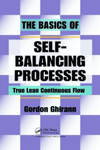X-Y-Z: Continuous Motion Systems Assemble Parts Fast
In the world of multistation automated assembly systems, there are high-speed systems, and then there are really high-speed systems.
Depending on the system and the product, rotary indexing dials or pallet-transfer systems can produce 15 to 250 assemblies per minute. In contrast, continuous motion assembly systems can routinely produce 400 to 800 parts per minute, and some machines can produce more than 1,800 parts per minute.
With intermittent motion systems, the assemblies must pause periodically so that some action can be performed. The assembly tools, such as screwdrivers and pick-and-place units, are stationary, explains Bob Ensminger, president of systems integrator Arthur G. Russell Co. Inc. (Bristol, CT). With continuous motion systems, the assemblies never stop moving. Assembly operations are carried out as the parts are moving, and the tools travel with the work in process.
High throughput isn't the only benefit of continuous motion assembly systems. The motion, while fast, is also smooth. The assemblies aren't constantly accelerated and decelerated, so there's less risk of damaging fragile parts. And, because the tooling never loses contact with the parts, they stay aligned throughout the assembly process.
The heart of a continuous motion assembly system is a cylindrically shaped rotating turret. The turret consists of a round dial with a series of tools, called pins, arrayed around its circumference. The size of the turret and the number of pins around it varies. "We've built turrets that had 36 tools and were more than 30 inches in diameter," says Ensminger. "Some continuous motion machines are 5 or 6 feet in diameter."
Parts enter the system single file on tracks from feeders or upstream operations. A star wheel, moving synchronously with the turret, strips off parts one after another and transfers them into nests spaced evenly around the dial. As the turret rotates, each pin is actuated in turn until the process is complete and the assembly is unloaded. The pins are most often actuated by cams, but they can also be controlled by servomotors.
"You can build a machine with multiple turrets and star wheels," says Ensminger. "When all the processes are complete, you can use another turret to separate rejects from acceptable product."
Continuous motion systems are used to assemble small, high-volume products, such as aerosol valves, bottle caps, syringes, tube assemblies, lipstick tubes, ballpoint pens, irrigation components, spray valves for household cleaners, and foam generators for beer cans. The parts assembled on continuous motion systems are typically round and symmetrical, but they don't have to be. "We built a machine to assemble a safety syringe that had some very irregularly shaped parts," says Ensminger.
That said, continuous motion assembly systems work best with parts that can be snapped or pushed together quickly and easily. If springs are part of the assembly, they should have closed coils at the ends, so they're easier to feed. If one part will be inserted into another, a chamfer in the base part will help compensate for any misalignment during assembly.
Continuous motion systems can accommodate most assembly processes, as long as they can be done quickly and from a vertical direction. These include crimping, dispensing, curing, ink-jet printing, labeling, laser marking, riveting, screwdriving, slitting, ultrasonic welding, vision inspection, leak and flow testing and functional testing.
Looking for a reprint of this article?
From high-res PDFs to custom plaques, order your copy today!






